Dental Protocol
- Patient Protocol
- Reception Protocol
- Operatory Protocol
- Housekeeping Protocol
- Sterilization Protocol
Patient Protocol
- Only appointments/ no walk in
- Brief history(travel history, quarantine/connection with covid patient, fever, cold, cough)
- Thermal scanning
- Only one attender
- Extra cost/payment
- Enter the reception
Patient Protocol/Emergency Assessment
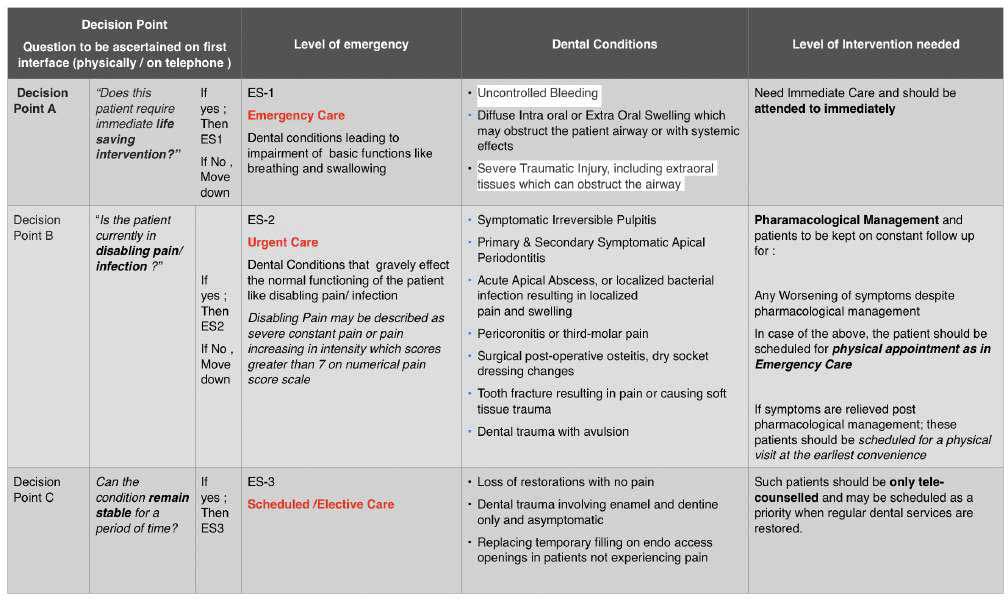
Thermal Scanning

Reception Protocol
- Welcome patient with hand sanitizer
- Seating-social distancing
- Detailed history
- Check for vitals
- COVID consent form
- Provide PPE

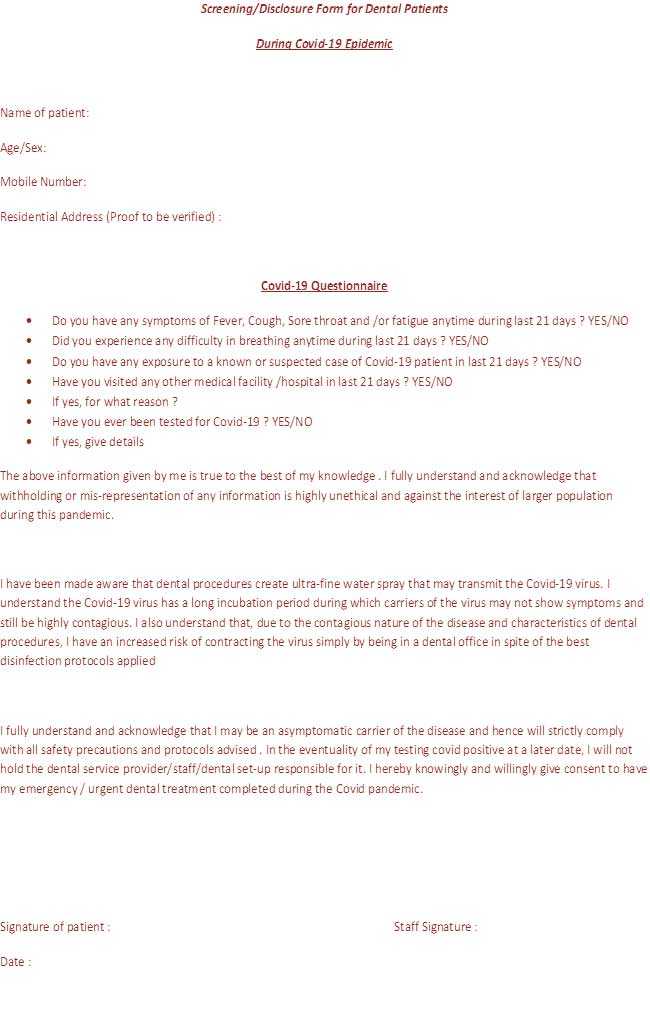
PPE Requirement At Different Levels Of Employee Setting In A Dental Office

Operatory Protocol
- Doctor and assistant wear PPE (donning)
- Make the patient sit in the chair
- Maximum single visit dentistry
- Patient to gargle with providing iodine/ h202
- Use a rubber dam
- High Vaccum suction
- Doffing of PPE
Doctors and Assistant PPE Polyproplene-100gsm
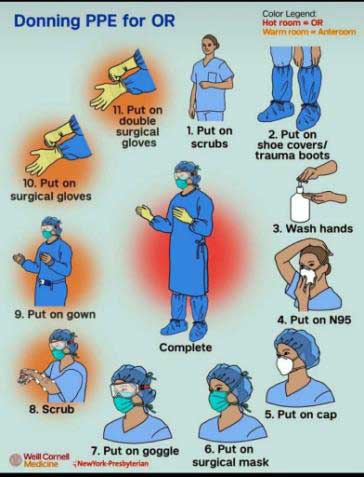
Mask and Face Shield FFP-2/FFP-3 3M-8210/N 95 Niosh Approved


Mask and Face Shield FFP-2/FFP-3 3m-8210/N 95 Niosh Approved
Important points to be noted:
• Single-use refers to the disposal of disposable PPE or decontamination of reusable items e.g.
eye protection or respirator, after each patient and/or following completion of a
procedure on a patient or session;
• Respirators can be used safely within their design specifications for
8 hours of continuous or intermittent use.
• Discard N95 respirators following use during aerosol-generating procedures or those
contaminated with blood or other body fluids.
• Perform hand hygiene with soap and water or an alcohol-based hand sanitizer before and
after touching or adjusting the respirator
• Ensure that areas for donning and doffing are designated as separate from the patient
care area (e.g., patient’s room)
Extended Use & Reuse of N95 Mask
Exposing contaminated N95 respirators to vaporized hydrogen peroxide (VHP) or
ultraviolet (UV) light appears to eliminate the SARS-CoV-2 virus from the material
and preserve the integrity of the masks’ fit for up to three uses, a National
Institutes of Health (NIH) study shows.
Dry heat (70° C) was also found to eliminate the virus on masks but was effective
for two uses instead of three.
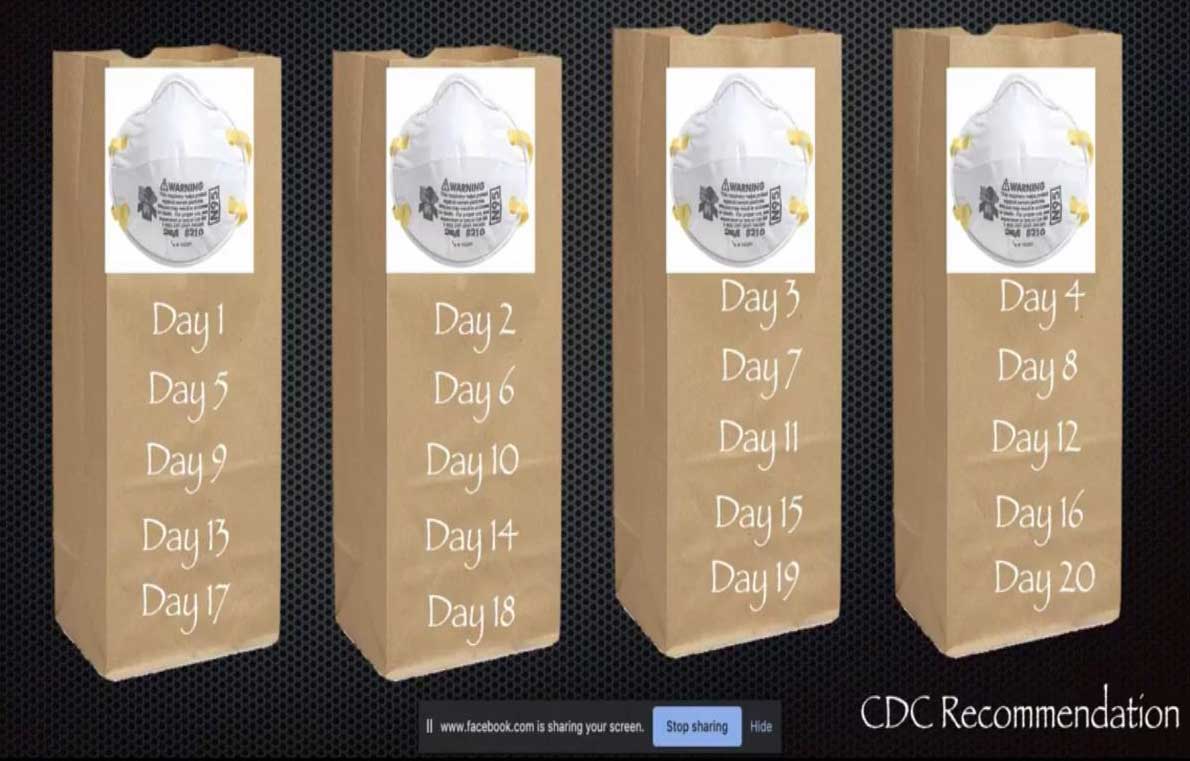
Povidine Iodine/h2o2 2% Povidine Iodine 0.1% Hydrogen Peroxide

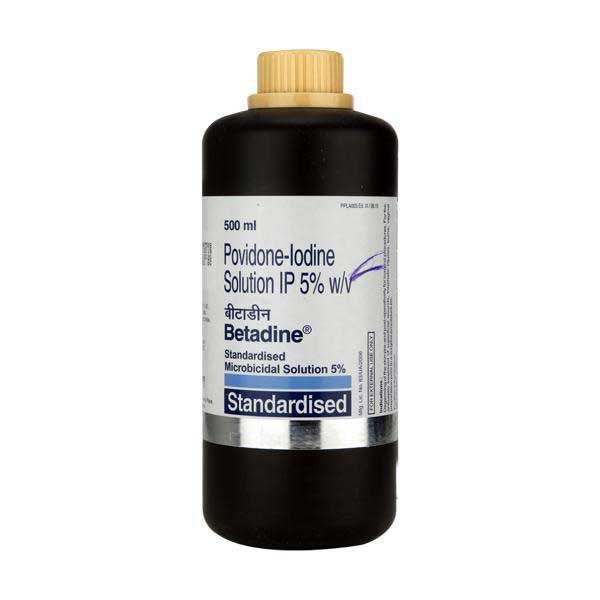
Rubberdam
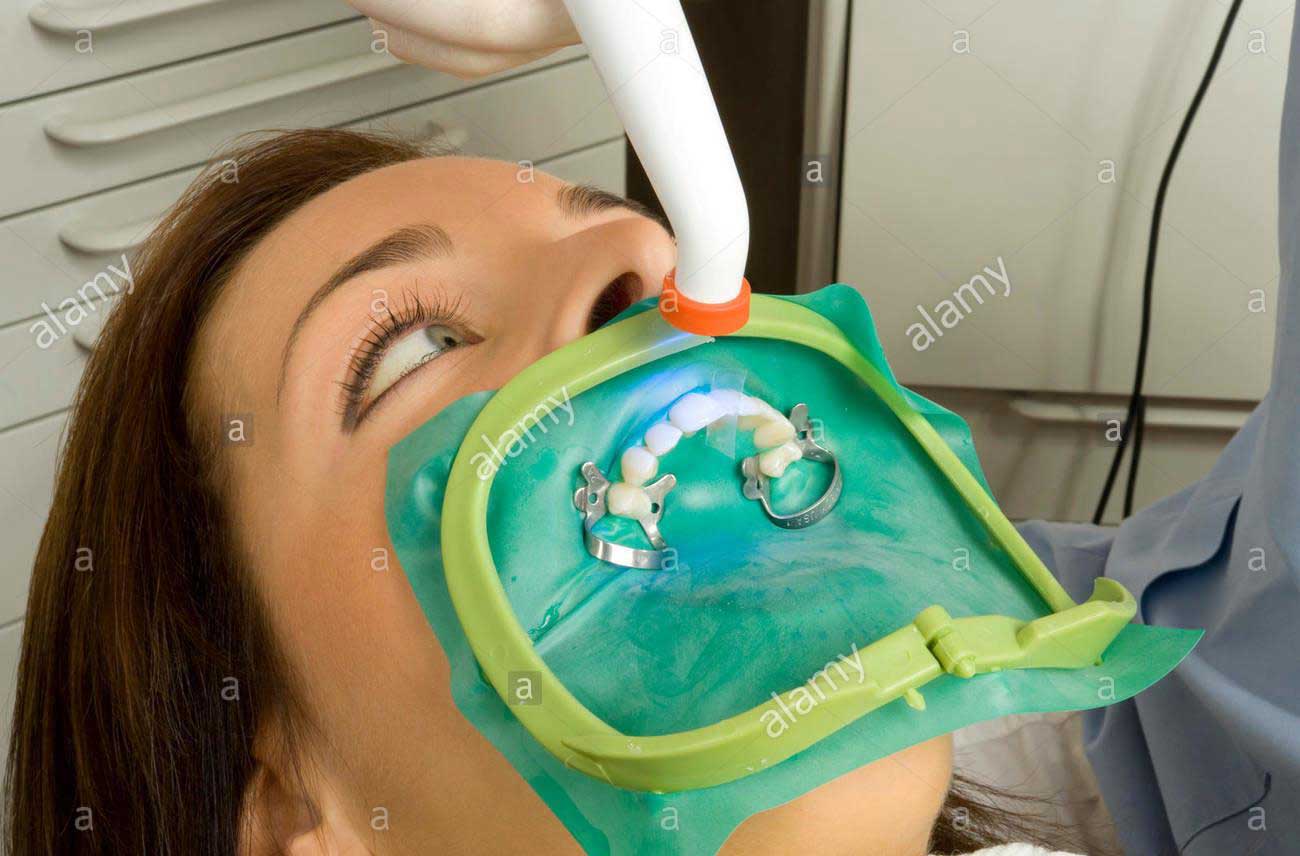
Extraoral High Vaccum Suction
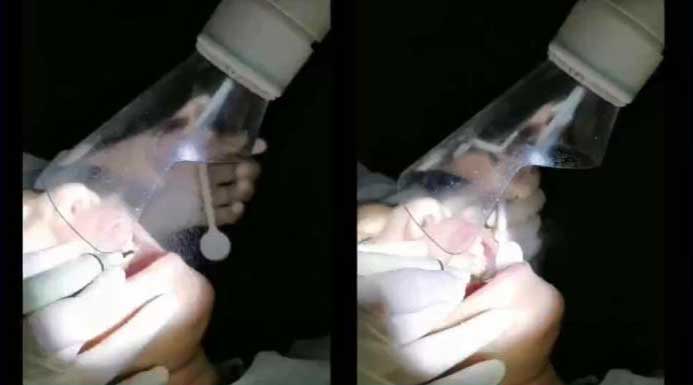
Intra Oral High and Low Vaccum Suction
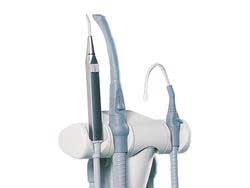

Donning and Doffing Procedure In Clinical Practice
- Dorn PPE before entering the operatory https://www.cdc.gov/hai/pdfs/ppe/ppe-sequence.pdf
- Surgical gown or coverall
Disposable surgical gown/coverall including shoe cover of quality that meets or exceeds ISO 16603
class 3 exposure pressure, or equivalent (63 to 69 GSM)
https://www.mohfw.gov.in/pdf/GuidelinesonrationaluseofPersonalProtectiveEquipment.pdf - Mask – N95 respirator: NIOSH N95, EN 149FFP2, or equivalent
Perform fit test to select the right size
https://www.osha.gov/video/respiratory_protection/fittesting_transcript.html - User seal check must be performed each time after wearing the mask
https://www.cdc.gov/niosh/docs/2018-130/pdfs/2018-130.pdf - Single extended use of 6-8 hours if it does not become contaminated.
Protect N95 with a surgical triple-layered mask which must be changed after every patient
Ref link for extended use or limited reuse of N95 masks
https://www.cdc.gov/niosh/topics/hcwcontrols/recommendedguidanceextuse.html - Wear Goggles with the flexible frame to ensure a good seal to the skin compliant with or equivalent to EU standard directive 86/686/EEC, EN 166/2002 or ANSI/SEA Z87.1-2010
- Disposable or cloth head cap in the absence of a hood
- Put on face shield compliant with or equivalent to EU standard directive 86/686/EEC, EN 166/2002 or ANSI/SEA Z87.1-2010
- Non-sterile nitrile gloves complying with any of the below standards
- EU standard directive 93/42/EECClassI, EN 455
- EU standard directive 89/686/EECCategory Ill, EN 374
- ANSI/SEA 105-2011
- ASTM D6319-10
Donning and Doffing Procedure Inclinical Practice
Step-by-step doffing of PPE after clinical procedure
- Doff the PPE after exiting the operatory
- Follow doffing sequence https://www.cdc.gov/hai/pdfs/ppe/ppe-sequence.pdf
- Provide ABHR ( Alcohol-based hand rub) in the doffing area
- Dispose of PPE appropriately according to biomedical waste disposal regulations
- Reusable autoclavable cloth gown and head caps if used must be immersed in domestic detergent for 20-25 min, washed at 70 degrees and then autoclaved
House Keeping Protocol
- FOGGING OPERATORY ROOM
- MOPPING THE FLOOR/SURFACES
- CHAIR CLEANING AND WRAPPING
- MAKING READY FOR THE NEXT PATIENT
Chair Wraping
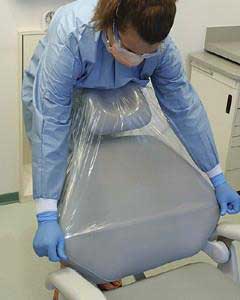
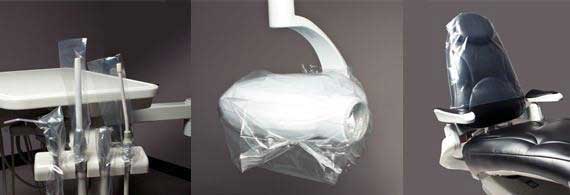
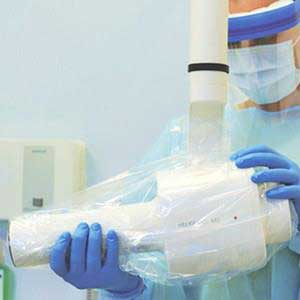
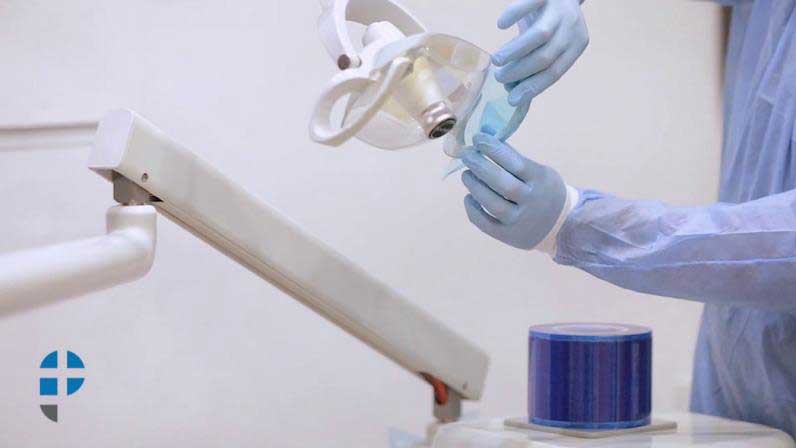
Sterilisation Protocol
- SOILED INSTRUMENTS IN SEPERATE TRAY
- CLEANING THE INSTRUMENTS WITH GLOVES
- ULTRASONIC CLEANING
- DRYING THE INSTRUMENTS
- POUCHING THE INSTRUMENTS
- AUTOCLAVE-B CLASS
- DATE OF AUTOCLAVE
- STORE IN RACKS
Recommended Disinfection and Sterilization Protocols For Dental Clinics Treating
Area Reception and patient waiting area
(Housekeeping surfaces)
Specifications:
- Avoid sweeping with a broom
- Use wet mopping with warm water and detergent (eg. 1:50 dilution of 5.25-6.15% Sodium
hypochlorite) - High touch surfaces (eg. doorknobs, handles, elevator buttons)
must be cleaned more frequently with hospital grade
detergent/disinfectant. - Toilets, washbasins, sinks must be cleaned with detergent and
disinfected with 1% sodium hypochlorite
Treatment area/patient care area
(Standard recommendation )
- Floor – Use Wet Moping- Multi Bucket Technique –
Water/Detergent/Low Level Disinfectant like 3% hydrogen peroxide,
1% sodium hypochlorite or EPA approved agents - High touch/clinical surfaces within 3 feet diameter of the dental
chair that are difficult to clean must be covered using a physical
barrier for every patient or disinfected between patients using a
wipe (Eg. 0.5% to 0.1% sodium hypochlorite or 70% alcohol for
sensitive surfaces) - Wet dust all non- critical/ non touch surfaces horizontal surfaces
with freshly prepared disinfectant solution once a day unless visibly
soiled (Eg. 0.5-1% Sodium hypochlorite or 3% hydrogen peroxide) - Walls, window blinds, frames cleaned and disinfected when visibly
soiled or end of the day - Mop heads and cleaning cloths must be discarded in biomedical
waste bins appropriates or decontaminated regularly by laundering
(heat disinfection) with detergent, 1:1000 dilution of sodium
hypochlorite and drying at 80 °c. Must be changed frequently
Aerosol adjuncts
(additional recommendations)
- Identify a closed room to perform Aerosol Generating Procedures(AGP) if available
- 1: 100 dilution of 5.25- 6.15% i.e., 0.01% of sodium hypochlorite for
Dental Unit Waterline. - Air should be filtered with High-Efficiency Particulate Air (HEPA 13 o14)- if recirculated or otherwise exhausted to the outside effectively
- Temporary use of a strategically placed portable, an industrial-grade HEPA filter may expedite the removal of airborne contaminants https://www.abatement.com/learning-center/patientisolation/faqs/
- Ultraviolet germicidal irradiation (UVGI) 252 nm, duct irradiation or upper-room air irradiation(30-40
Watts/100 sq feet) can be used as an adjunct air-cleaning measure but it cannot replace HEPA filtration - Allow adequate time for sufficient ACH to remove 99% of airborne particles and to perform
environmental disinfection of min 20minutes after non-AGP and 30 minutes after AGP between
patients - Hydrogen peroxide vapor fumigation with 30% hydrogen peroxide
can be performed
Note:
- Disinfectants approved by the Environmental Protection Agency, Disinfectant List
Coronavirus Disease 2019
(COVID-19) 03/13/2020 are recommended for surface disinfection procedures.
https://www.epa.gov/pesticide-registration/list-n-disinfectants-use-against-sars-cov-2 - Do not use disinfectants spray-on potentially highly contaminated areas (such as toilet bowl
or spitoons) as it
may create splashes that can further spread the virus. - 70% of Alcohol can be used to wipe down surfaces where the use of bleach is not suitable, e.g.
metal.
(Chloroxylenol (4.5-5.5%)/ Benzalkonium Chloride or any other disinfectants found to be
effective against
coronavirus may be used as per manufacturer’s instructions) - Always use freshly prepared sodium hypochlorite solution and discard remnant diluted
solution
Conclusion
- Self-quarantine till further instructions
- Social distancing in reception
- Face mask to everyone
- Avoid aerosol practices till June
- Single-visit treatments
- Use sodium hypochlorite
- Use proper PPE
- Use proper sterilization & disinfection
protocols - Practice safe dentistry & stay safe
Unity Is Our Strenght


